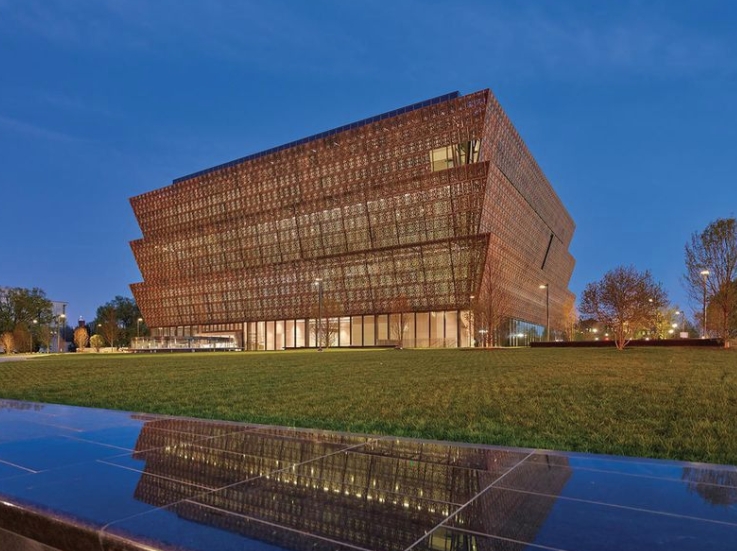
National Museum of African American History and Culture in Washington, DC. The building design was based on a traditional West African hat style.
Saturday, Feb. 17, 55 local residents traveled by bus to the National Museum of African American History and Culture, on a trip organized by Sumner Hall. It was a striking and memorable experience – a powerful reminder of the stark history of African Americans and of the enormous contributions they have made to our nation.
The bus pulled out of the parking lot in Chestertown a little after 8:30 a.m. The weather was good — cold but sunny with a blue sky– and we were at the museum in less than an hour and a half, arriving in Washington in plenty of time for our 11 a.m. appointment. That gave the group over five hours to explore the exhibits – and eat lunch – before the 4 p.m. return trip. While that may seem plenty of time, it was barely time to scratch the surface of this incredible rich institution.
The museum was packed – like all Smithsonian museums, admission is free, and the African American museum has been enormously popular ever since it opened not quite a year and a half ago in Sept, 2016. Going to the museum will give you a clear indication just how rich and complex the African-American contribution to our society has been. To draw on an area I happen to know a fair bit about, my first reaction in walking around the musical exhibit that occupies much of the top floor was astonishment at just how much the museum has packed in. Here’s Chuck Berry’s bright red Cadillac convertible, as well as one of his guitars; here’s footage of Charlie Parker and Dizzy Gillespie playing “Hot House” on a 1952 TV show; here’s the gown Marian Anderson wore at her historic concert at the Lincoln Memorial; here’s the Mothership that the funk bands Parliament and Funkadelic used in stage shows; here’s Leadbelly’s 12-string guitar; here’s a photo of Robert Johnson I didn’t know existed – and that’s just scratching the surface. The mind boggles!
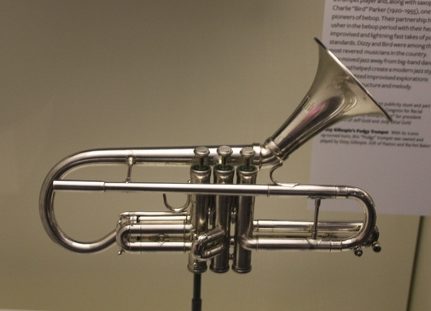
Dizzy’s horn
Then I began to notice what wasn’t there – or at least what I didn’t find in the hour or so I walked through the musical exhibits. Was there anything about Lester Young or the Mills Brothers or James P. Johnson or Nina Simone – or did I miss it? And then I realized there just isn’t room for all that – they’d need a building bigger than the one they have, just dedicated to the music, and they’d still have to pick and choose to get in a representative sample of the subject matter – and there’d still be gaps in the coverage. That brought home even more powerfully the impact of black Americans on music. And if that’s true of one area, what does it say about the museum as a whole? The same has to be true of its coverage of writers, athletes, painters and sculptors, and all the other areas where African Americans have made an impact on our national culture. Ultimately, I came away even more impressed with what the museum has done.
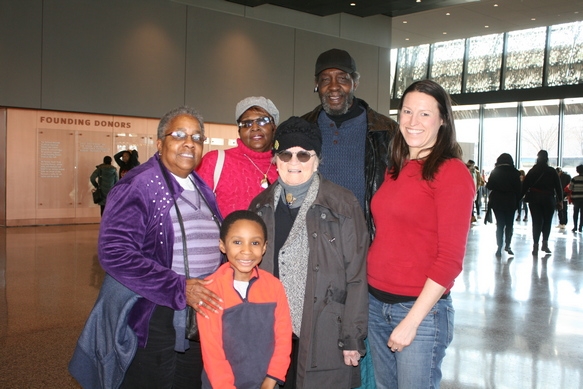 That was especially true of the historical displays, which make up the bottom three floors of the museum, covering a range from the earliest days of slavery through the modern era. The exhibits present detailed, often intense, documentation of the African American experience in the New World – full of historical maps, documents, archaeological artifacts from Africa, Europe, and the Americas, with ample audio-visual material to put them all in context. An entire slave cabin from the Carolina coast sits in the middle of one floor; one of the Tuskegee Airmen’s planes hangs from the ceiling as you go up the ramps between floors; life-sized statues of historical figures are spread around the exhibit. Seeing it all in a single visit is literally impossible – even if you take in only the surface aspects. A good idea on your first visit – an opportunity we missed, but will probably take up next time we go – is to follow around one of the docents guiding tour groups. But again, to really appreciate it, you need to plan more than one visit. It’s well worth it. There’s even a section on African Americans and the Chesapeake Bay with a display about the Eastern Shore of Maryland including black watermen and the seafood industry.
That was especially true of the historical displays, which make up the bottom three floors of the museum, covering a range from the earliest days of slavery through the modern era. The exhibits present detailed, often intense, documentation of the African American experience in the New World – full of historical maps, documents, archaeological artifacts from Africa, Europe, and the Americas, with ample audio-visual material to put them all in context. An entire slave cabin from the Carolina coast sits in the middle of one floor; one of the Tuskegee Airmen’s planes hangs from the ceiling as you go up the ramps between floors; life-sized statues of historical figures are spread around the exhibit. Seeing it all in a single visit is literally impossible – even if you take in only the surface aspects. A good idea on your first visit – an opportunity we missed, but will probably take up next time we go – is to follow around one of the docents guiding tour groups. But again, to really appreciate it, you need to plan more than one visit. It’s well worth it. There’s even a section on African Americans and the Chesapeake Bay with a display about the Eastern Shore of Maryland including black watermen and the seafood industry.
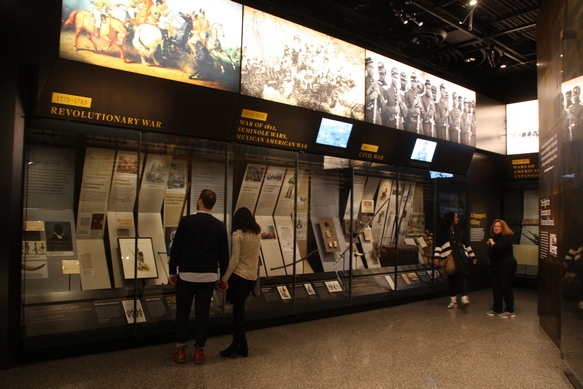 Upon our arrival at the museum, the group split up into smaller groups, each exploring on their own, at their own pace. A few who had been to the museum before were helpful with their recommendations of things to seek out. Many groups met up again around lunchtime in the museum cafe, where the menu features dishes from the various African American communities — catfish, fried chicken, grits, gumbo, the whole range of American soul food –an important aspect of the culture the museum documents. (Also note — outside food can’t be brought into the museum, so you might as well enjoy the cafe.)
Upon our arrival at the museum, the group split up into smaller groups, each exploring on their own, at their own pace. A few who had been to the museum before were helpful with their recommendations of things to seek out. Many groups met up again around lunchtime in the museum cafe, where the menu features dishes from the various African American communities — catfish, fried chicken, grits, gumbo, the whole range of American soul food –an important aspect of the culture the museum documents. (Also note — outside food can’t be brought into the museum, so you might as well enjoy the cafe.)
Even in our five-hour visit, we saw far more than one article can possibly include (we plan to do several follow-up stories in the Spy to try to do the museum justice). But a few vignettes stuck out, A young man stood by the statue the of the 1968 Black Power protest at the Mexico City Olympics, raising his fist in emulation; a group of Naval Academy cadets in uniform toured the museum, solemnly taking in the history; teenagers took in the exhibits, for once looking at something other than their cell phones. And at almost every turn people could be heard responding to what they were seeing. It wasn’t a loud crowd. People were speaking quietly, respectfully. And they were polite and considerate, moving aside for people, offering to take pictures for each other. Neither was it a completely somber atmosphere. The history exhibits were unflinching in their stark and honest portrayal of slavery, segregation, and oppression but they also showed how enslaved peoples managed to find love and joy in their lives, despite the constant hardships. The culture sections on music, arts, and sports literally had people dancing around, excited and laughing as they came across artists they remembered from their youth or saw some new, beautiful work of art. Displays on African Americans in the military and as entrepreneurs were inspiring and enlightening. A truly involving experience for everyone!
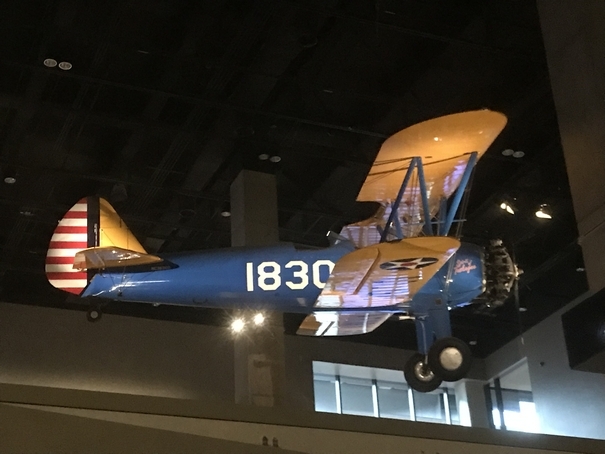
Airplane flown by the famous Tuskegee pilots in World War II
We noted above that the museum is crowded. This is good, in that people are making an effort to learn about and understand this vital element of our history and culture. But it makes for a challenging experience at times. For some displays, standing in front of the exhibit long enough to absorb all the information felt awkward when there were lots of other people waiting to get a look. When that happened, we just walked ahead or dropped back to find an uncrowded exhibit. Be aware that there’s a lot of walking to see everything but there were also frequent benches where you could take a quick break as well as escalators and an elevator. You’ll definitely want to go back several times to really get all this museum has to offer. Several people on our tour had been before and still were eager to go this time and commented on how much they enjoyed a repeat visit, seeing things they hadn’t before. The next time we go, we’ll try for a week day, when crowds are likely to be a bit smaller.
The weather had been very good in the morning when we left, but snow and sleet had been predicted and it showed up right on time for the trip home. Joe, our Jor-Lin bus driver, was an excellent driver and guide. The trip back took over two hours and we saw several cars in the ditch on 301 on this side of the Bay Bridge. But we made it back to Sumner Hall without incident – thank you, Joe! – where most of us trooped inside to feast off a sumptuous spread of hors d’ouvres, desserts, and some fabulous chicken salad with wine and other drinks on hand. All this in honor not of the bus trip but for the reception before author and Patrick Henry Fellow Will Haygood’s speech at 7 p.m., which some of the more indefatigable members of the bus trip stayed to attend. (More to come on Haygood in future Spy articles.)
All in all, it was a wonderful day at the museum.
Tickets for the National Museum of African American History and Culture, though free, must be ordered in advance — go to the museum’s website. The museum is sold out until June, so plan ahead — and try for a weekday, if you can, to reduce the crowd pressure. It’s well worth waiting for.
Photo Gallery by Peter Heck and Jane Jewell
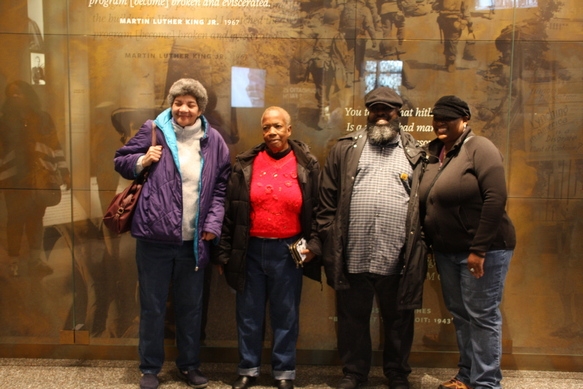
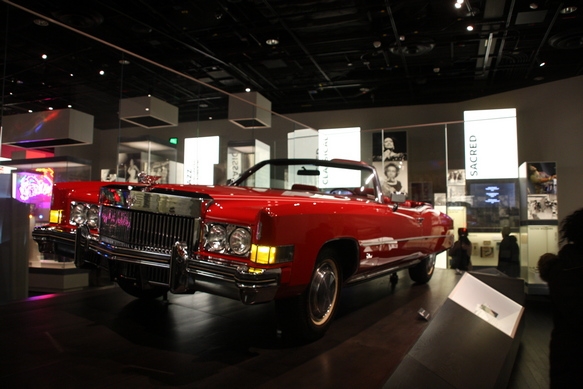
Chuck Berry’s Cadillac Eldorado – a favorite place to get your picture taken
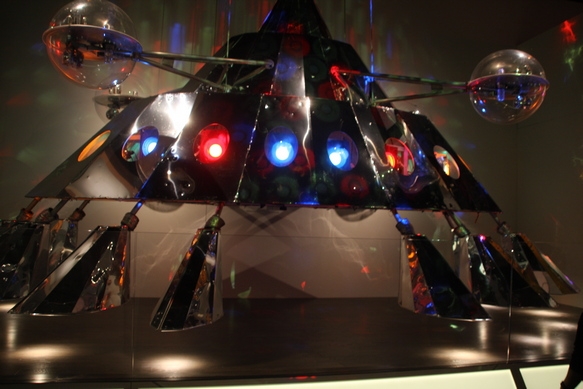
The P-Funk Mothership AKA The Holy Mothership – a key feature of the stage act of the Funkadelic and Parliament bands’ concerts.
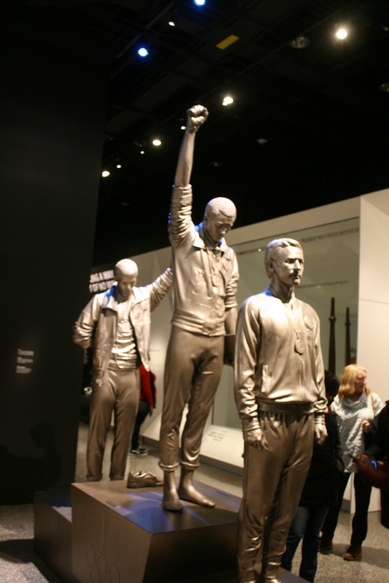
Statue of 1968 Olympic Protest

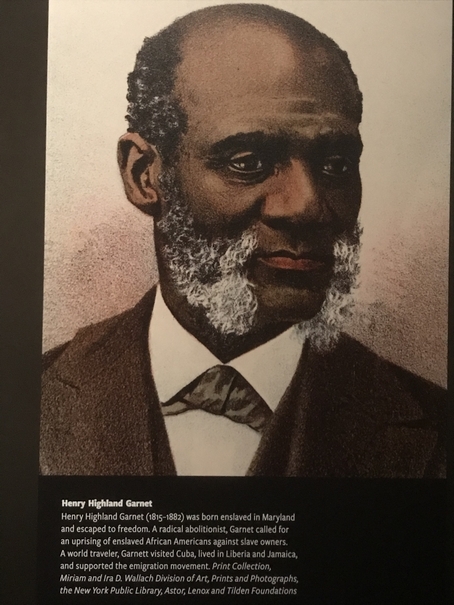
Henry Highland Garnet – born in Kent County – escaped slave, civil rights activist, and first Black minister to preach in congress
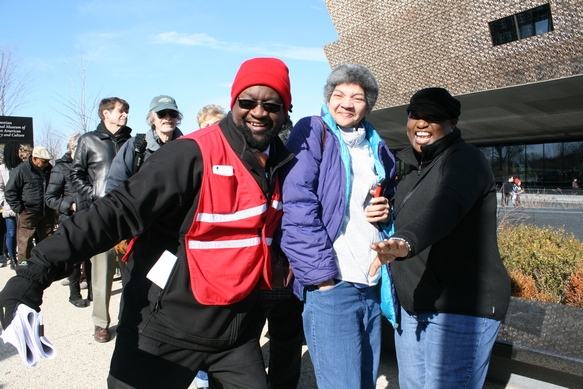
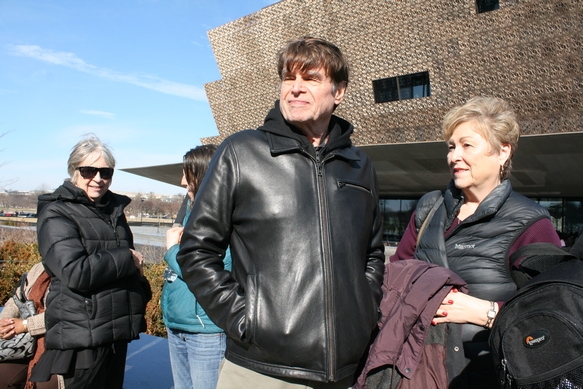
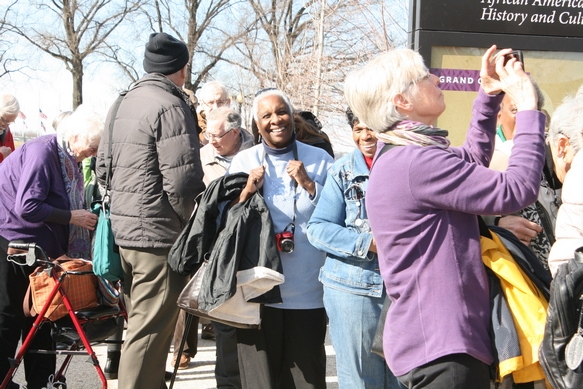
###
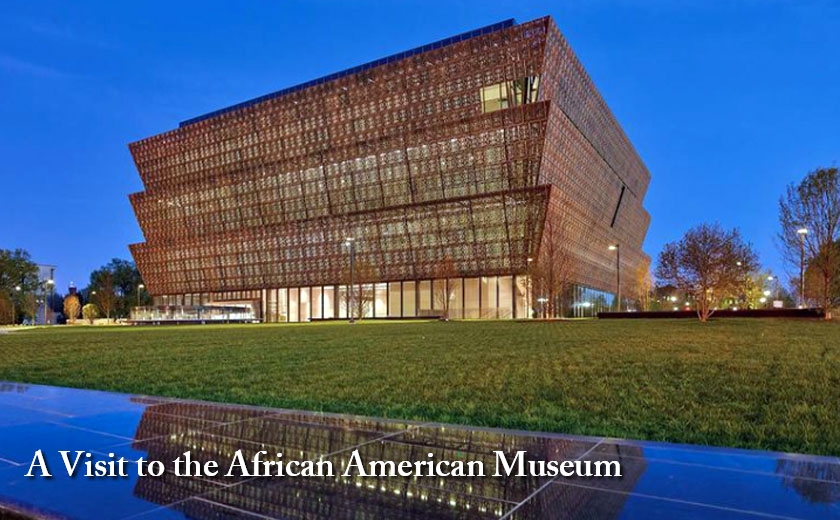


Write a Letter to the Editor on this Article
We encourage readers to offer their point of view on this article by submitting the following form. Editing is sometimes necessary and is done at the discretion of the editorial staff.